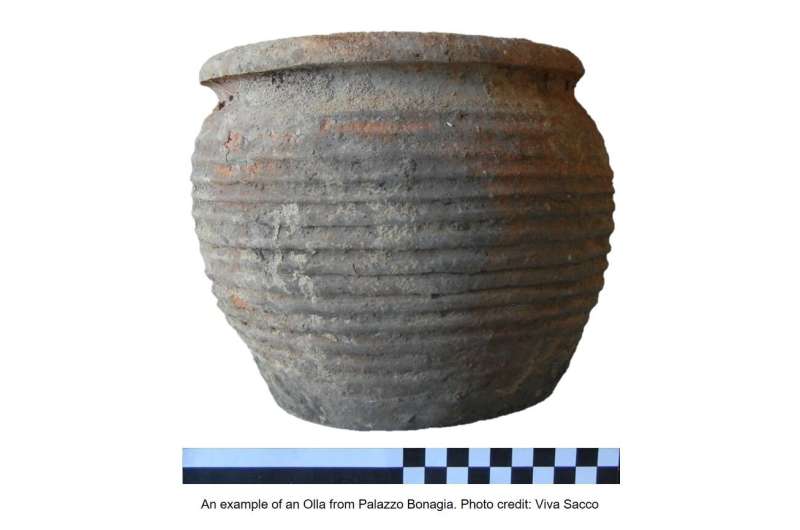Ceramics provide insights into medieval Islamic cuisine

Organic residues on ceramic pottery are a valuable resource for understanding medieval cuisines of Islamic-ruled Sicily, according to a study published June 9, 2021 in the open-access journal PLOS ONE by Jasmine Lundy of the University of York, UK and colleagues.
During the 9th to 12th century AD, Sicily was under Islamic rule. This transition is known to have profoundly impacted the region, and the capital city of Palermo thrived as an economic and cultural center of the Mediterranean Islamic world. But little is known about how the lives of people in the region were impacted during this important time period.
In this study, researchers examined organic residues of plant and animal products on ceramic pottery to gain insights into the cuisine of the time.
They tested 134 cooking pots and other similar containers, dating between the 9th and 12th century AD, from the urban city of Palermo and the rural town of Casale San Pietro. The results indicate a wide variety of vegetables, fruits, beeswax and animal food products, complementing other archaeological evidence. The authors highlight some notable differences between rural and urban cuisines, including the greater frequency of grapes and dairy products in the rural site.
This study is a profound demonstration of the utility of organic residue analysis for understanding cuisine of Islamic ruled Sicily. The mixture of a diverse assortment of food products is consistent with the colorful dishes noted in Arabic literature, and the differences observed between rural and urban sites suggests there is more to be learned about how cultures differed across Sicilian society. Further studies using similar techniques will expand our understanding of how cuisine preferences and use of ceramics changed while Sicily was under Islamic rule.
The authors add: "Analysis of residues preserved in pottery has, for the first time, revealed important insight into cuisine in medieval Islamic Sicily. We have identified a diverse range of products processed in cooking wares, as well as regional differences in the use of ceramics such as for the processing of dairy and grapevine products."
More information: Jasmine Lundy et al, New insights into early medieval Islamic cuisine: Organic residue analysis of pottery from rural and urban Sicily, PLOS ONE (2021). DOI: 10.1371/journal.pone.0252225
Journal information: PLoS ONE
Provided by Public Library of Science




















